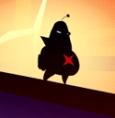Bliztk
Posts: 779
Joined: 4/24/2002
From: Electronic City
Status: offline

|
One word: Nomonhan
Copypaste from
http://www.militaryhistoryonline.com/20thcentury/articles/nomonhan.aspx
The Kwantung Army was still willing to escalate. On July 1, 1939 the IJA 23rd Infantry Division, under Lt. Gen. Komatsubara Michitaro, backed by two tank regiments, struck at the Russians dug in east of the river. The pushed to the Khalka River, and in the night, two regiments crossed the river, seizing the Baintsagan Heights on the west bank.
But in early June, an aggressive new Soviet commander arrived. He was Lt. Gen. Georgi K. Zhukov, age 42. On July 1st the 1st Front Army was organized under his command. As soon as he learned of the Japanese penetration, he launched a coordinated three-pronged counterattack by the 11th Tank Brigade, plus a motorized infantry regiment and a brigade of armored cars. The Japanese themselves launched a counter attack to try to hold onto their gains, but the Japanese anti-tank weapons were not adequate against Soviet armor. The Japanese, in desperation, resorted to suicide attacks with squads of men hurling satchel charges and Molotov cocktails, but they could not stop the Soviet onslaught. In two days of heavy fighting the Soviets retook the Baintsagan Heights and threatened the one pontoon bridge the Japanese had across the Khalkin Gol, forcing the Japanese to withdraw over the river.
The fighting went on. Between late May and July 25th the Japanese suffered some 5,000 casualties along a thirty kilometer front. Russian losses were higher, but the Red Army could call on greater manpower resources. The real battle was logistics, and here, Zhukov excelled. His nearest base, on the Trans-Siberian Railway, was 465 miles away across dirt roads. Zhukov estimated his needs at 18,000 tons of artillery shells alone, plus fuel and lubricants, food, and everything else needed to sustain modern warfare. Over the months, Zhukov built up a fleet of 2,600 trucks, including 1,000 fuel trucks.
Meanwhile the Japanese supply system was badly handled. Troops went for days without water in temperatures that reached 104 degrees Fahrenheit and more in the daytime. In general the Nomonhan area was inhospitable. With broiling hot days came cold, damp nights. Dust was everywhere, while swarms of flies and mosquitoes tormented the men. Bad sanitation and lack of water brought typhus and dysentery. Most importantly, the nearly 200 mile distance from their base of supply in Hailaerh and the lack of motorized transport created an insurmountable logistical bottleneck for the Japanese.
By early August the Japanese had some 75,000 IJA and Manchurian troops committed, including the 7th and 23rd Infantry Divisions, plus cavalry, artillery, and anti-tank units, supported by some 300- 500 planes in three Air Groups. On August 10th the Japanese organized their forces into the 6th Army under Gen. Ogisu Rippu. Gen. Ogisu planned an offensive, top begin on August 24th.
But the Soviets had also opted for a decision. Alarmed at Hitler's threats against Poland, Stalin wanted to be freed up from distractions in the Far East. Stalin was prepared to deal with Hitler, but he wanted to do so from as strong a position as possible. In early August, STAVKA, the Soviet high command, sent Zhukov an additional 1,625 trucks from European Russia. This gave Zhukov the logistical base he needed for a decisive stroke.
Decision:
At 6:00 AM, on August 20th, Zhukov struck. 100,000 Russian and Mongolian troops moved forward along a 48 mile front, supported by 500 tanks and 216 artillery pieces. Surprise was total. Soviet artillery outgunned the Japanese batteries, which were short on ammunition. Russian bombardments cut phone lines, isolated Japanese units, and blasted apart flimsy dugouts. 200 SB-2 bombers, heavily supported by fighters, struck Japanese defenses and lines of communications. The Soviet bombers could fly at 20,000 feet, too high for the Japanese fighter planes. Soviet air losses were high, but they were able to wrest command of the air over the battlefield from the Japanese.
The decisive factor was that Zhukov coordinated his armor with infantry, artillery, and air support. The Japanese in the 1930s were hampered by a limited manufacturing base. They could not build airplanes and tanks in sufficient quantities at the same time. The Japanese had opted to develop aircraft production. Now the Japanese paid the price, as Soviet T-26 and T-28 tanks chopped up the weaker Japanese armor. The Russians had learned, and countered the Japanese use of Molotov cocktails by converting their tanks to diesel fuel and putting wire mesh netting over vulnerable engine gratings.
In savage fighting the Soviets cut around the Japanese left (southern) flank, and then the Japanese right, in a double envelopment. Soviet tanks, now behind the Japanese, linked up at the village of Nomonhan, trapping the Japanese 23rd Division. The Japanese fought back with desperate courage. One Japanese regimental commander burnt his colors and committed seppuku, rather than surrender. Another died in a last, fanatic banzai charge against oncoming Russian armor. But it was all in vain. Russian tanks, equipped with flamethrowers, supported by infantry, took one entrenched Japanese strong point after another.
On August 26th a Japanese counter attack to relieve the trapped 23rd Division was halted by a Russian tank brigade. The next day, the Japanese 23rd Division made a last bitter effort to break out to the east. They were defeated. By August 31, 1939 the Japanese had been driven back out of the disputed territory. Of 60,000 Japanese troops committed, nearly 45,000 were killed. The IJA 23rd Infantry Division took 73% casualties. The 71st Regiment suffered over 93% losses. In contrast, the IJA took 28% casualties at Mukden, the most hard fought battle of the Russo-Japanese War.
< Message edited by Bliztk -- 12/1/2005 11:27:01 AM >
|
 Printable Version
Printable Version








 Let me add a little to that.
Let me add a little to that. 








 - it would be too samuri-like.
- it would be too samuri-like.



 New Messages
New Messages No New Messages
No New Messages Hot Topic w/ New Messages
Hot Topic w/ New Messages Hot Topic w/o New Messages
Hot Topic w/o New Messages Locked w/ New Messages
Locked w/ New Messages Locked w/o New Messages
Locked w/o New Messages Post New Thread
Post New Thread